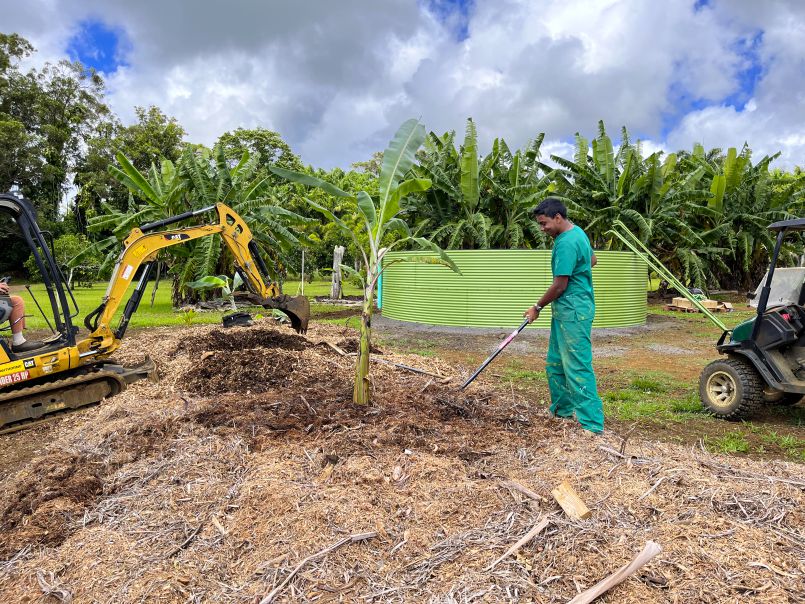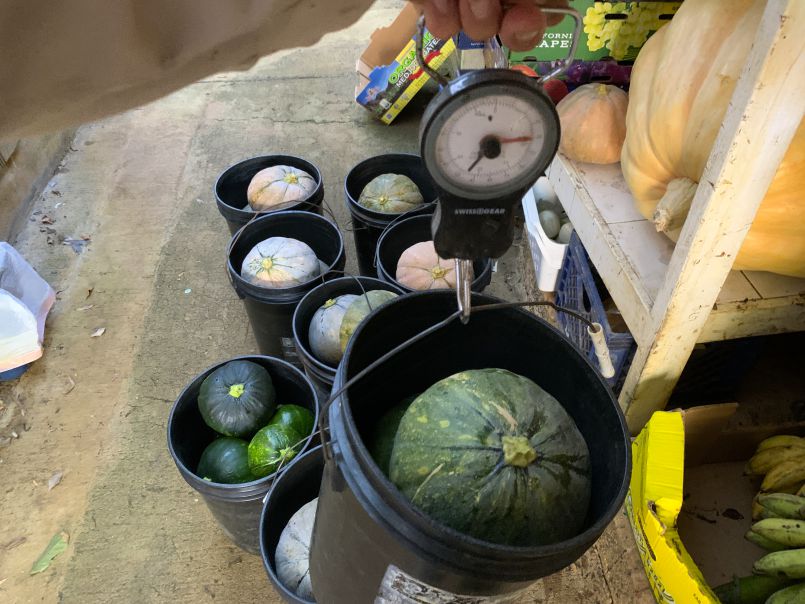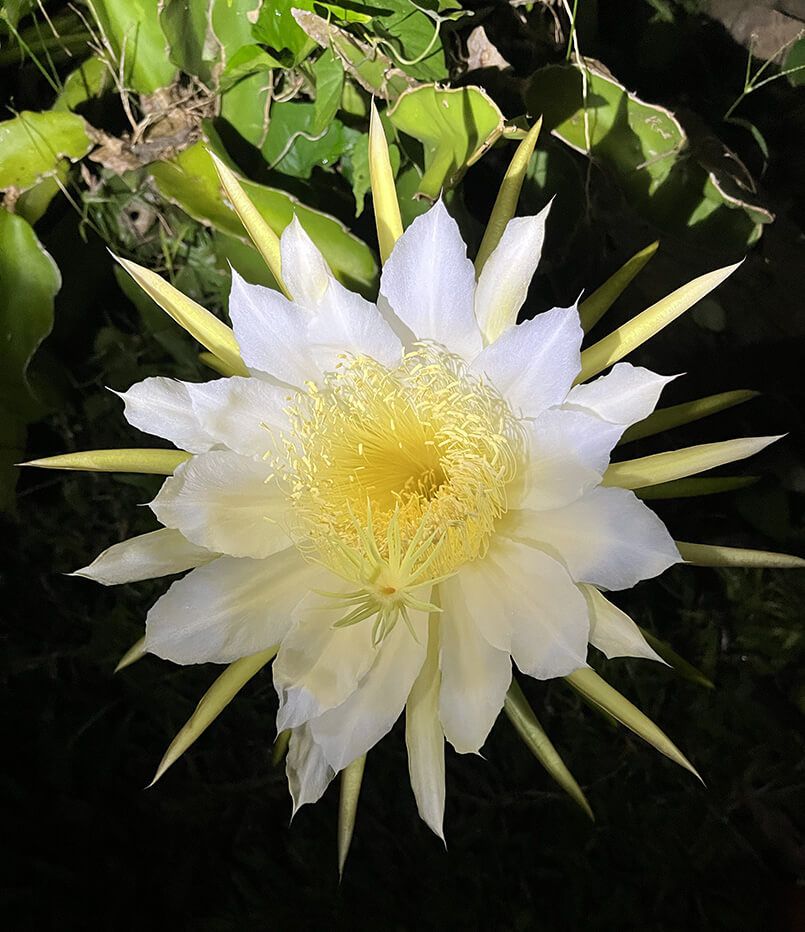Noni Fruit Drying and Picking Trailer Fix
Here are some photos of noni fruit sheets coming out of the dryer and ready to be pulverized into powder.
Also, after many years of service, a trailer bed that holds the noni picking platform started to falter one too many times. We've hired a welding team to replace various metal parts on it so full strength is present again.
Annual Fruit Tree Fertilizing
Fruit trees are to be given extra nutrients right when new fruits start forming, a boost for vigorous growth. A lot of mulch from local tree trimming projects is delivered to us regularly, so after it breaks down for a while, the Siddhidata Kulam applies a pile of this dark, nearly-soil material around the base of each tree. They are running several weeks late due to soggy ground, but now it's dry enough for the tractor to drive through the orchards without creating ruts (which would then make things difficult for the lawn mower).
Tractor Blessing for Himalayan Acres
At our leased 400 acres across the Wailua River, a tractor is used frequently to mow grass between the rows of noni fruit trees and hardwood trees. Our Branson-brand tractor was starting to break down too frequently, so we found a John Deere tractor in the midwest of mainland US, waited for temperatures to warm so it could be moved onto on a hauling truck to be moved to California, and now it's finally here getting blessed.
The blessing took place at the new home of the Ganesha murti that used to be on San Marga path. Arati was shown, a coconut broken, and limes crushed under the wheels to ward off any asuric forces. The tractor is now hard at work across the river.
Noni Fruit Picking, and Gurudeva Annual Puja Events Underway
We took taskforcer Tarun Nathoo (in green) over to Himalayan Acres for the first time, to join us in picking hundreds of pounds of noni fruit. Suresh and Rajkumar also joined us. They got to briefly experience the picking platform to reach the higher fruits, while spending most of the time picking the younger trees from the ground.
The second group of photos shows the Ganapati Kulam updating our Guru Puja pilgrims on some of its media activities, including new artwork commissions, videos to show US sixth graders about students visiting the eastern dharmic religions' places of worship, and the Sanskrit pronunciation website we recently created.
Planting More Banana Trees

Vishvanathaswami and taskforcer Tarun Nathoo planted a special variety of banana by the new Siddhidata Kulam shop. This will provide food, and privacy for the building. Not to mention it will look very beautiful. Thank you Tarun for your hard work!
Hawaiian Heirloom Orange Tree
Some 70 years ago Uncle Manuel, who used to be the caretaker of the Aadheenam lands back in the 40s and 50s, brought a special orange tree he was give by the native islanders on the West Side of our island. He planted it on the land, not far from the current Rudraksha Forest, in a pasture.
The tree was famed both for its sweet taste and the fact it gives oranges all year long. It spent its years happily in the sun, munched on occasionally by our cows. But it is getting old, covered with lichen, and suffering from cow abuse. So we set out to graft it and save the genetics.
Yesterday Sean Kelly and Eilene came to help, both experts in grafting. They brought a robust root stock well established in pots, and they cut from the famed tree and grafter three copies.
Hopefully one or more will make it and we will start fresh with a new long life of oranges.
December 2022 Greenhouse Update!
Today we wanted to show our cyber cadets some of the wonderful vegetables growing in our greenhouse. We started green snap peas a few months ago, most of the plants are flowering and some are even starting to fruit. Hopefully they can be harvested soon so the monks can enjoy them on their banana leaves! We also wanted to showcase our tomato plants, particularly the rare, yellow beefsteak variety that we are growing for the first time. All of our tomato vines (that were planted a few months ago) are fruiting and the first harvest will happen within the next month or so.
Aum Namah Sivaya!
Small, Big and Bigger Pumpkin Growth Cycle

Botany Explore

Beautiful flowers!
Ripper-fertilizer gift
From Our Gurus' Teachings
Archives are now available through 2001. Light colored days have no posts. 1998-2001 coming later.
